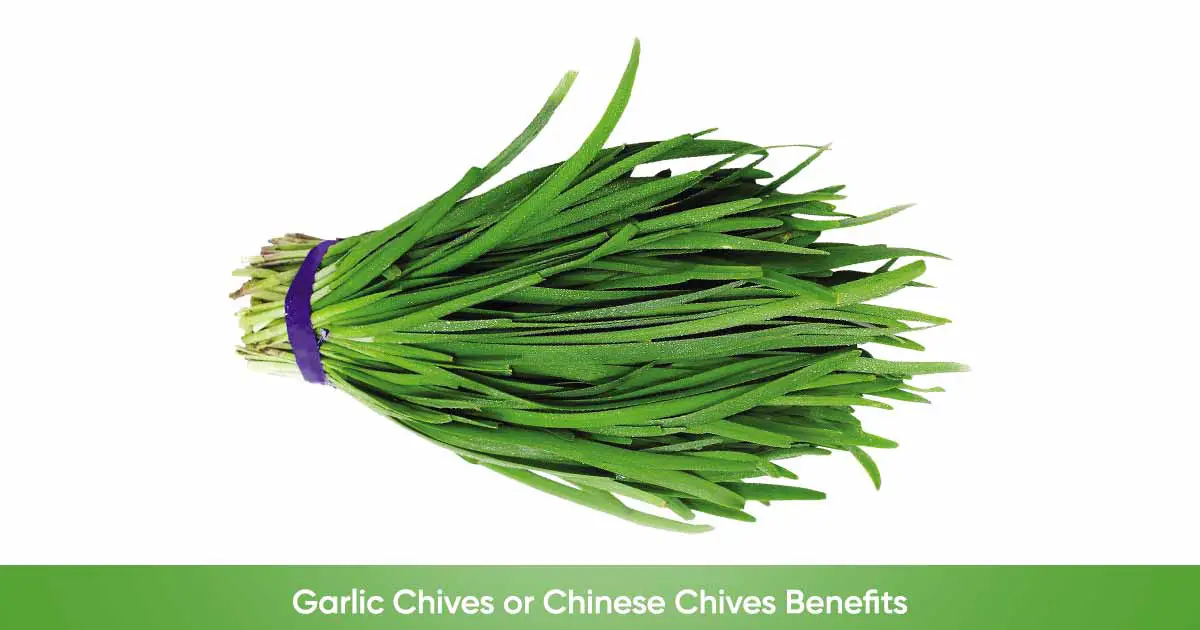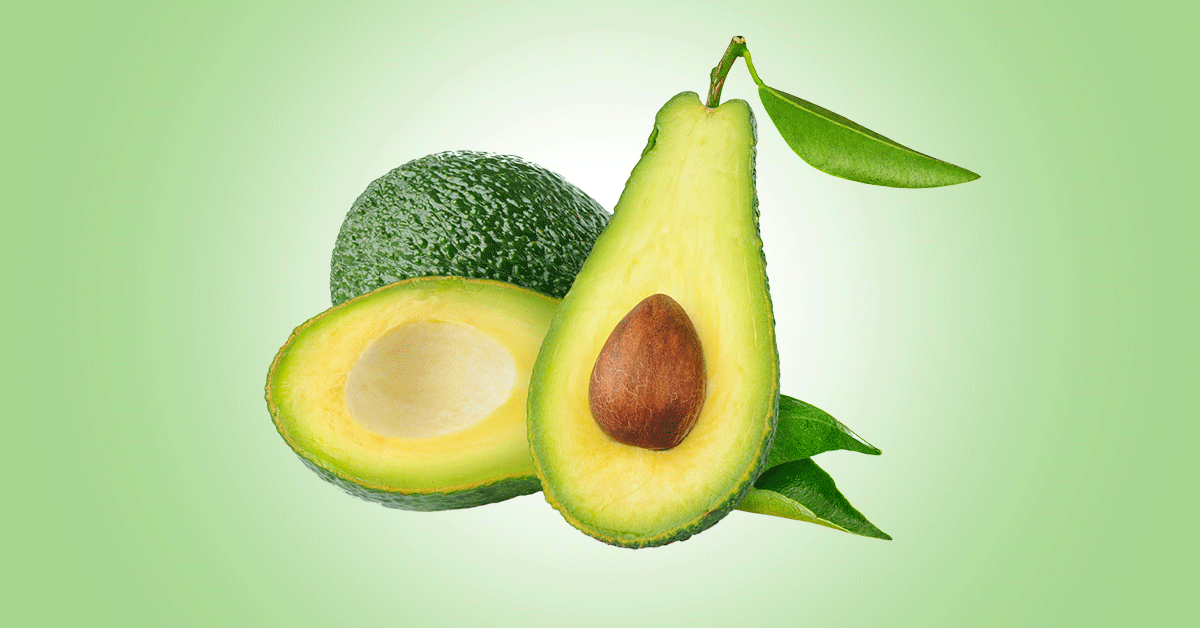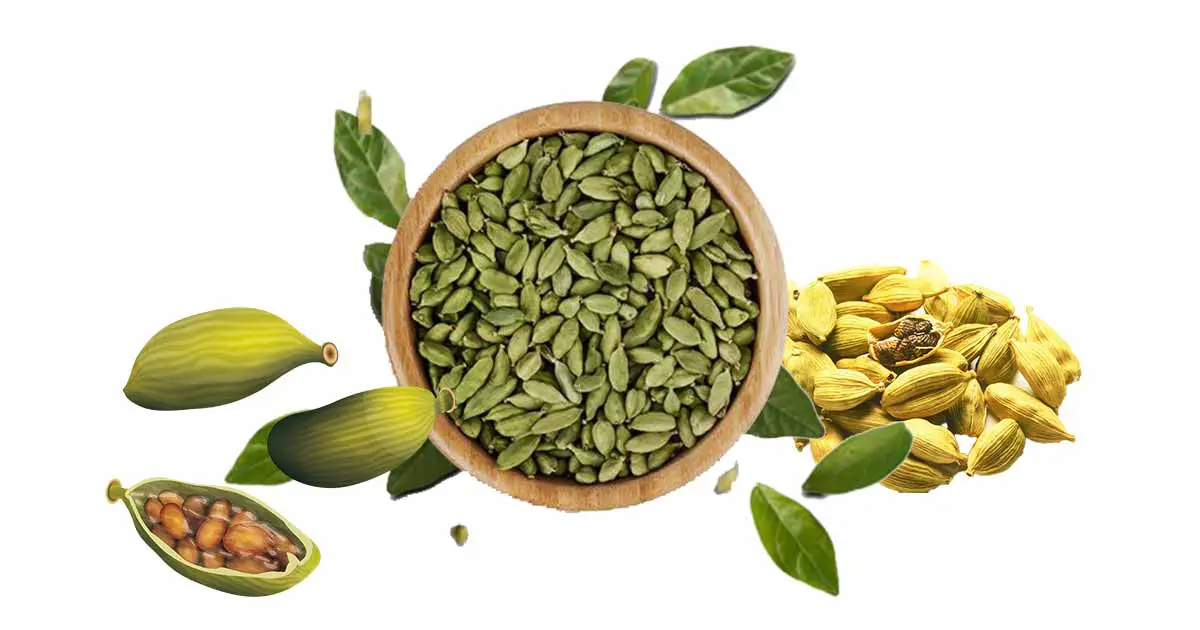Garlic chives, also called Allium tuberosum, Oriental garlic, Asian chives, Chinese chives or Chinese leek, is a late-season bloomer of the onion family (Amaryllidaceae).
It is native to Southeast Asia, but mainly used as an ornamental plant in North America. It is mostly grown and consumed as a vegetable in Asian countries like China, India, the Philippines, India, Korea, and Thailand.
A. tuberosum is a hardy, herbaceous perennial plant forms slowly expanding clumps of gray-green foliage. The bulb is elongated and poorly developed. It attaches individually to a stout rhizome in the same way as that of an iris, and produces 4–9 leaves.
These leaves are chive-like, grayish green, narrow, flattened and grass-like. It arches downward at the tip and forms a fountain of green. In warm climate, the leaves are evergreen but in colder climate, they die in the winter. When the leaves are crushed, they release strong onion or garlic flavor.
During late summer or early fall, the flowers open on sturdy stalks above the foliage. Each loose umbel contains many small, white, star-shaped flowers with brown-striped tepals. The flowers give rise to the dark, papery capsules. The capsules are filled with hard, triangular-shaped black seeds.
Garlic chives have a subtle flavor, like a mild garlic. When consumed raw, the narrow bulb is strong and sharp. The leaves are used similarly to green onions or chives, and are used for soups, stir fries, salads, stews, egg dishes, oriental dishes, and miso soup in Japan. It is also used to flavor butters, egg, creams, seafood, sour cream, cottage cheese, oils, and vinegar. The fragrant flowers are also edible. Cooking garlic chives for longer than five minutes could cause loss of flavor.
In traditional medicine, garlic chives is used in India for managing spermatorrhoea. In Chinese medicine, it is used to treat snakebite, asthma, diarrhea, and abdominal pain. The leaves and the bulbs are applied topically on bites, cuts, and wounds. The seeds have carminative and stomachic effects. Others uses include treating urinary incontinence, kidney and bladder weaknesses, as tonic, and as a digestive.
Nutritional Composition
Garlic chives is rich in dietary fiber, carotene, vitamins A, vitamin C, riboflavin, potassium, iron, thiamine, and beta-carotene
Garlic chives contains 4.4g of carbohydrates, 0.73g of fats, 3.27g of proteins, 2.5g of dietary fiber, 1.9 g of sugar, and 22.94 kcal of energy.
Minerals: Potassium (296 mg), calcium (92 mg), phosphorus (58 mg), magnesium (42 mg), iron, copper, zinc, sodium, zinc, manganese, and selenium.
Vitamins: Vitamin C (58.1 mg), vitamin A (1305 mcg), vitamin K (213 mcg), folate (105 mcg), niacin, riboflavin, thiamine, vitamin B-6, vitamin E.
Bioactive Compounds
Allium tuberosum essential oils contain mainly dimethyl disulfide, allyl methyl disulfide, dimethyl trisulfide, allyl methyl trisulfide, methyl 1-propenyl disulfide, and diallyl disulfide. The leaves contain sulfides, linalool, and flavonoid glycosides.
Allium tuberosum contains phenylpropane glycosides like tuberonoid A and B, flavonoids (kaempferol and quercetin derivatives), pyrazine compounds, nucleosides, and nucleotides (uracil, thymine, thymidine deoxyriboside, adenine riboside), lignan compounds.
Garlic chives seeds: nicotianoside C, [(22S)-cholest-5-ene-1 beta, 3 beta, 16 beta, 22-tetrol-1-O-alpha-L-
rhamnopyranosyl-16-O-beta-D-glucopyranoside], daucosterol, adenosine, and thymidine.
There are steroidal saponin compounds (spirostanols, three furostanols and one cholesterol), oligoglycosides (urostane-type steroidal oligoglycosides, and pregnane-type oligoglycosides)
Root: The root extract contains spirostanol saponins (tuberosine A, B, and C), phenylpropanoidglucoside (tuberosine D)
Health Benefits of Garlic Chives and Garlic Chives Seeds
Antioxidant effect:
Allium tuberosum contains polyphenols, carotenoids, vitamin C, and flavonoids which possess strong antioxidant potential. Antioxidants are free-radical scavengers that prevent lipid peroxidation, DNA damage and diseases.
Hypolipidemic activity:
Allium tuberosum extract reduced serum cholesterol, triglyceride, LDL-C, and atherogenic index in hyperlipidemic guineapigs (Choudhary R. 2008). It also contains high dietary fiber, which helps to reduce cholesterol.
Antidiabetic effect:
Methanolic extract of garlic chives improved the antioxidant enzymes – catalase, superoxide dismutase and glutathione levels, and decreased fasting blood glucose, serum concentration of triglyceride, total cholesterol, malondialdehyde, in alloxan-induced diabetic rats.
Antibacterial activity:
Garlic chives extract inhibits Klebsiella pneumoniae, Staphylococcus aureus, Pseudomonas aeruginosa, Bacillus subtilis, with the highest inhibition against Bacillus subtilis.
The essential oil constituent, diallyl disulfide also inhibits gram-positive microbes such as Salmonella typhimurium, Escherichia coli, Campylobacter jejuni, S. aureus, and Listeria monocytogenes, while the thiosulfinates (S-methyl methanethiosulfonate and S-methyl 2-propene-1-thiosulfinate) inhibits E. coli.
Antifungal activity:
Thiosulfonates of A. tuberosum possess antifungal activity against Aspergillus niger, Aspergillus flavus and Aspergillus fumigatus. An essential oil constituent, allyltrisulfide, also inhibits A. flavus and A. oryzae.
Anticancer property:
Thiosulfinates compounds (S-methyl methanethiosulfonate and S-methyl 2-propene-1-thiosulfinate) of A. tuberosum inhibit human breast cancer cells MCF-7, human colon cancer cells HT-29, human prostate cancer cells RC-58T. The mechanism could be by inducing apoptosis through activation of the initiator caspase-8, and -9, and the effector caspase-3, and inhibiting cancer cell proliferation.
Another compound, tuberoside M from the seed extract, inhibit human promyelocytic leukemia cell line (HL-60).
Hepatoprotective property:
Allium tuberosum extract decreases malondialdehyde, pro-inflammatory cytokines IL-1b, IL-6 and TNF-α levels, and improved the antioxidant levels in mice induced with acute liver damage using carbon tetrachloride (CCl4). Other markers of liver damage like ALP (alkaline phosphatase), ALT (alanine transaminase), AST (aspartate aminotransferase), were decreased.
The anti-diabetic and hepatoprotective effects of garlic chives is related to the antioxidant and anti-inflammatory activities (Xingli Tang et al. 2017).
Aphrodisiac effect:
The extract of A. tuberosum significantly improved sexual behavior of sexually active and inactive male rats (Guohua H et al. 2009).
A. tuberosum increased serum testosterone level and nitric oxide (NO) level, which helps in penile psychogenic erection.
Renoprotective activity:
Polysaccharides from garlic chives significantly reduced the area of renal pathogenic damage induced by adenine in mice by reducing the damaged area, decreasing the serum level of creatinine and blood urea nitrogen (Li QM, et al. 2017).
Promote hair growth:
n-butanol extract from garlic chives when applied to the dorsal skin area of mice augmented the hair follicles number by stimulating the expression of insulin like growth factor-1 (IGF-1) (Nilius B, et al. 2011).
Insect repellant:
Volatile disulfides such as methyl and 2-propenyl (allyl) radicals from the essential oils inhibits the Plutella xylostella larvae.
References
- https://hort.extension.wisc.edu/articles/garlic-chives-allium-tuberosum/
- https://pfaf.org/user/plant.aspx?latinname=Allium+tuberosum
- https://superbherb.co.nz/product/garlic-chives/
- https://doi.org/10.1016/j.foodres.2017.08.034
- http://heritagegarden.uic.edu/garlic-chives-allium-tuberosum
- https://www.plantsjournal.com/archives/2019/vol7issue2/PartC/7-2-33-247.pdf












